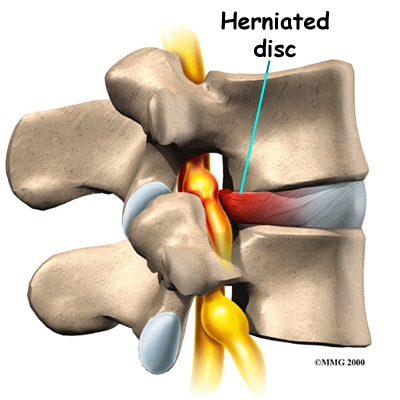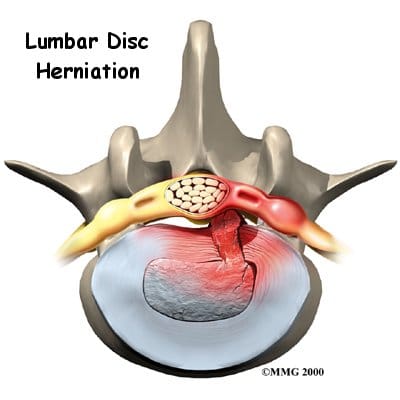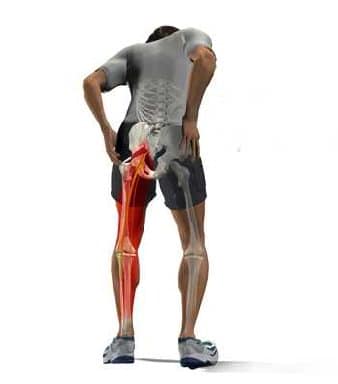
What is a Disc Herniation?
A disc herniation is often referred to as a slipped disc, but the disc doesn’t actually slip out of place. Rather, the term herniation means that the material at the center of the disc has squeezed out of its normal space. This occurs when the center material degenerates, due to previous injury, and the outer portion tears. This condition mainly affects people between 30 and 40 years old.
When the disc material squeezes (or extrudes) out towards the back and side it can impinge upon the exiting nerve. If it is in the lumbar spine it can press upon the nerve which will become the sciatic nerve as it exits the spine and goes down the leg. When it irritates this nerve it will cause pain, weakness, or numbness down the leg called “Sciatica”.
If it exits the disc more towards the back it can press on the spinal cord itself. This is a worse condition.

Given below is the characteristic presentation of a patient with Sciatica. What you don’t see is the severe pain the patient is in.
What causes Disc Herniation?
Vigorous, repetitive bending, twisting, and lifting can place abnormal pressure on the shock-absorbing nucleus of the disc. If great enough, this increased pressure can injure the outer portion of the disc, or annulus, leading to herniation.
A lumbar disc can also become herniated during an acute (sudden) injury. Improper lifting, heavy impact, or falling, or injuries from auto accidents, can cause a disc herniation.
How can you help Disc Herniation?
With state of the art approaches and over 20 years experience, we use a variety of modalities to reduce the pain and swelling. Low force Chiropractic techniques, flexion/distraction, spinal decompression, Active Release Technique, acupuncture, and Applied Kinesiology approaches can successfully treat this condition. In most circumstances, spine surgery and injections are not necessary in the management of disc problems, and they often cause more problems than they’re worth.


